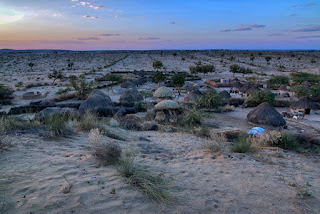Thar Desert
History
This region is part of the great The Thar Desert, which is spread over parts of India and Pakistan. Most of the Thar
Desert lies in the Indian state of Rajasthan and is extended till Haryana and Gujarat.
In Pakistan, this desert lies on the eastern border of Sindh Province and is
extended till southeastern parts of the Punjab where it joins the Cholistan
desert. Tharparkar is the largest district of Sindh.
The origin of Thar Desert is
controversial as many historians have given different accounts about its origin.
Some of the historical references state that previously this region was fertile
and it turned into a desert from 2000 to 1500 BC. At that time, a river used
to flow in this region, which was a water source for the Indus Valley
Civilization. Some historians believe that this is the same river called
Sarasvati, one of the main rivers mentioned in Vedas. The region has also been
discussed in Hindu Mythology, Ramayana, where it is called Lavanasagara
which means salt ocean.
After the fall of the Indus
Civilization, Sindh was ruled by different dynasties, including the Soomras,
the Summas, the Arghuns, the Kalhoras, and the Talpurs. However, these rulers
focused on the central and western parts of Sindh, and the areas along the eastern
boundaries, comprising of Tharparkar, were neglected. When Britain invaded the subcontinent,
General Charles Napier, a commander in the British Army, defeated the Talpur dynasty
and conquered Sindh in 1843.
General Charles Napier was appointed
as the first Governor-General of Sindh. He made Tharparkar a part of Hyderabad.
In 1860, this region was named as “Eastern Sindh Frontier” with its
headquarters at Umerkot. In 1882, the British government divided the province
into different administrative units and assigned to Zamindars (landlords) to
collect taxes for the British government. Umerkot was given the status of a district under this promulgation. In 1906, the headquarters of this district
was shifted from Umerkot to Mirpurkhas.
On 31st October 1990, this district
was split into two districts named “Thar” and “Mirpurkhas”. In 1994, Umerkot was
carved out of Thar and was given the status of a district. Now district
Tharparkar consists of the areas of Thar Desert.






Comments
Post a Comment